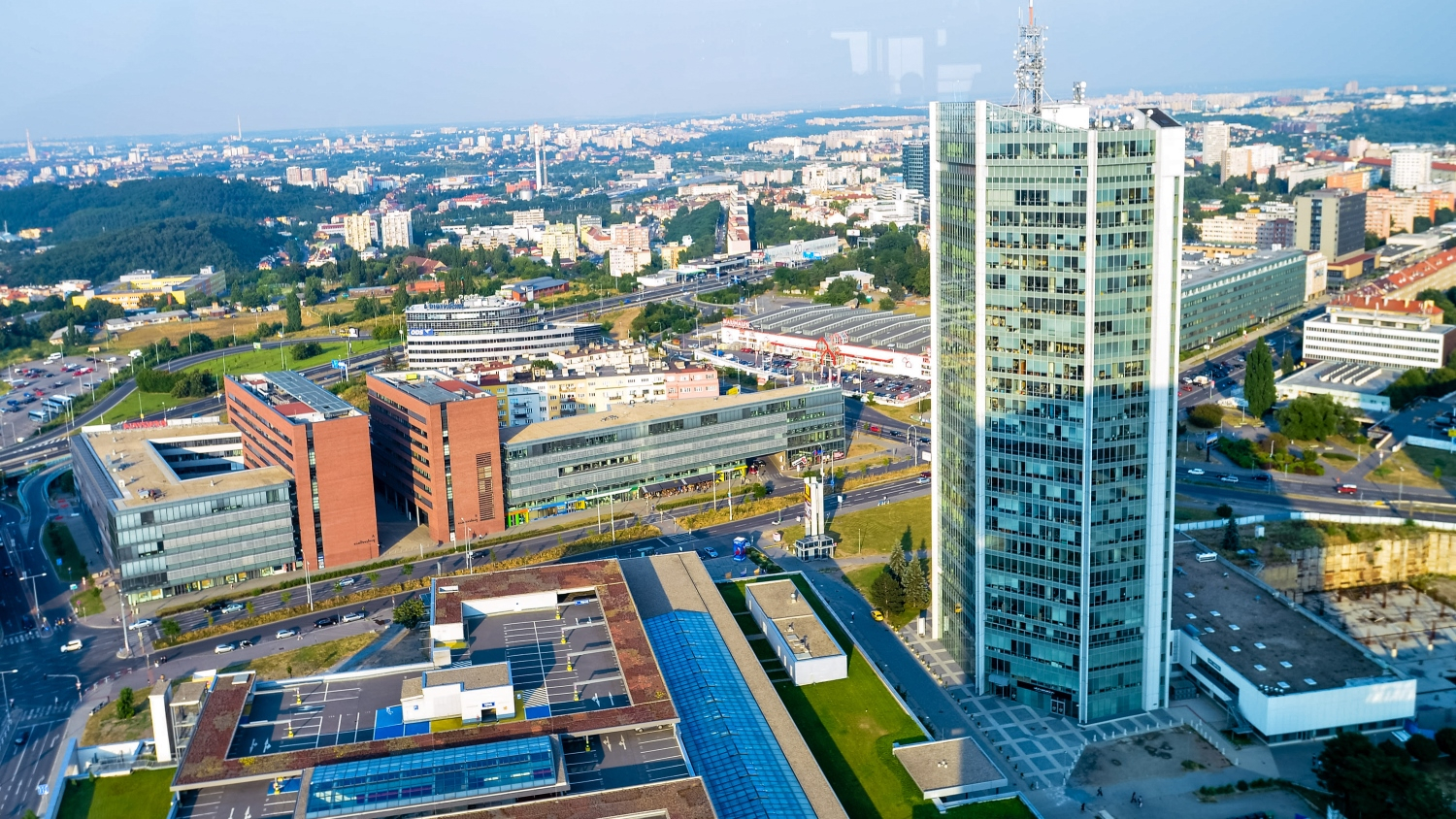
The Czech property investment market continues to post solid figures in an environment that is increasingly less bullish. One of the leading local players believes that a downturn of the current property cycle will eventually come from a major outside macro shock and before this happens, the Czech commercial property sector will keep showing positive figures. Tomáš Jandík, CFA, MRICS, REICO’s Chief Investment Officer shared his market expectations with Property Forum.
Tomáš Jandík will join the senior CEE investment panel at the upcoming Prague Property Forum 2019.
According to the latest RICS Commercial Property Monitor, the Czech market has reached the peak of the current cycle. Do you agree with this statement?
Czech investment volumes are going down second or third year in a row but what is really important for the definition of a property cycle is the yield curve. In the Czech Republic, I think we have reached a certain pricing plateau. A peak would indicate that pricing can only go down which is quite unlikely as long there is no major macroeconomic shock. Excess of demand over supply of prime investment product is still very high and there are very diverse capital sources which means that pricing may be sustainable. Further prime yield compression, however, is limited and should not be interpreted on the back of a few super prime deals. Investors are weary and worst-case scenarios must be carefully considered. The real economy faces risks such as rising labour costs which may slow down corporate expansions hence demand for space. Also, our backbone industry, the automotive sector, faces years of disruption with subsequent uncertainties for its supply chain. I believe that a downturn of the cycle will eventually come from a major outside macro shock and before this happens, the Czech commercial property sector will keep showing positive figures.

Tomáš Jandík
Chief Investment Officer, Member of the Board of Directors
REICO
How would you describe the general market sentiment on the CEE investment market?
General sentiment for CEE is, in my view, very positive: investment volumes in 2018 grew by 15% driven mainly by Poland due to a large number of investment opportunities, perceived reduction in political risk and new sources of capital chasing yield alternatives to Western Europe. Yield compression is strong in Hungary as well as in Slovakia and still ongoing in Poland and some pockets of Czech submarkets. However, pricing becomes quite challenging for various groups, especially value-adders and opportunistic investors which feeds into discussions about looming slow down or even crisis. This, however, should be a macroeconomic discussion rather than a real estate problem for three reasons: (1) occupier demand remains high especially in offices and logistics, (2) there is a high number of investors with various capital sources on most prime disposals and (3) prime property yields relative to European bond yields remain still very attractive.
Do you expect 2019 to be as strong of a year as 2018 was?
Generally so. In terms of pricing, I think that there will not be any submarket within the V4 countries which would weaken in terms of reported prime yield, possibly Polish regional retail but unlikely on the prime end of the market. Conversely, some sectors will see yield compression, especially outside of the Czech Republic. In terms of investment volumes, I don’t have a strict opinion as yet but I think that most agencies will start estimating the year-end volumes during summer break.
How would you summarize your investment strategy for 2019?
Our long term investment strategy has not changed for the past few years: invest in prime properties across CE countries and four submarkets (offices, retail, logistics and high street) to generate moderate portfolio return at low risk. In terms of acquisition strategy, our tactical allocation for 2019 focuses on the Czech Republic and Slovakia as we have spent over €350 mil in Poland in the past two years and going further abroad is not on the agenda this year.
What do you think are the biggest risks regional investors need to face today?
The biggest risk is a general macroeconomic shock feeding into yields and rental values. I am mostly worried about some Western European submarkets where sharp yields are being substantiated only by bold rental growth assumptions which may not materialize. The yield curve and rental value shifts are always most damaging when a position needs to be liquidated in an adverse timing but I think that these risks exposures are not significant as a systematic factor over a longer holding period. The biggest risk is that you get the underwriting wrong for a particular deal due to a specific factor such as a negative location shift (e.g. in retail) or ageing property specifics (e.g. in offices).
What is your view on the growing importance of local and cross-CEE capital? Can it limit the entry of new foreign players?
I think that none of these groups can limit the entrance of new foreign players. Local capital investing domestically is typically private capital which has higher return expectations whereas new foreign players such as Korean capital work at much lower yields. Cross-CEE capital, such as our ČS nemovitostní fond may represent competition to new foreign capital but the market is too large to limit a group to enter a market and chase opportunities at very full pricing where established domestic players don’t see such value. In any case, local capital can work well in that it gives exit to traditional international property investors at ever-increasing volumes.
In your opinion which asset class is the most attractive in CEE right now? Are investors opening up towards alternative assets?
There is a lack of prime offices, so pricing remains high there. Very high demand for logistics also drives pricing to levels well above replacement costs and only retail is seeing reduced investor appetite due to uncertainties prevailing in the retail industry. Personally, I think it is a great time for retail specialists who can spot and repair selected schemes with good fundamentals. There will be a high supply of retail investment product from liquidated closed-end funds across the region in the upcoming years which may not necessarily find its demand. Investors who have been priced out of traditional segments may also start looking for alternatives such as student housing but volumes there will remain insignificant for a long time I think.



